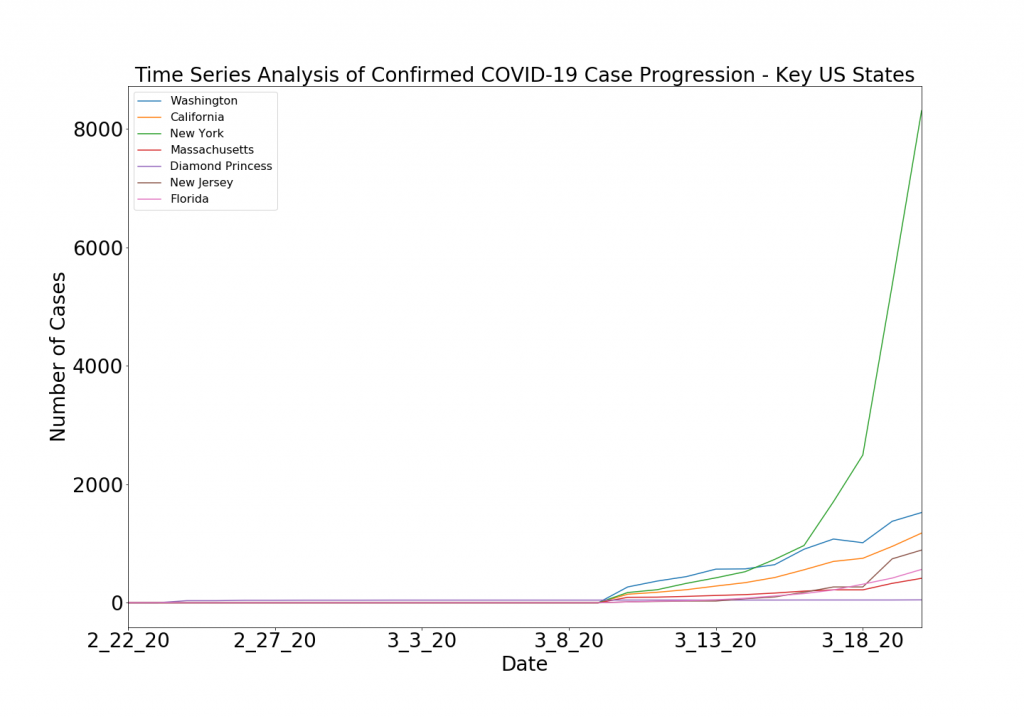
I introduced Instantaneous Rates of Change a few days ago thanks to a good suggestion by Brad Morantz, a fellow AI researcher. I had been trying to represent the severity of the curve of deaths over time through a linear fit, something I knew was sub-optimal, but figured was good enough for the purpose. Here’s a good link describing this concept. Now, the IROC gives me the slope of the curve at any given day. This is very interesting now that we are hoping to see these accelerating death curves turn over and decelerate. In the table above, you can see the IROC for 3/30 as well as the Delta IROC which I’m defining (right now) as today’s IROC minus the IROC from 2 days ago. This metric gives us an indicator when the slope of the curve is decreasing.
By the way, looking at the table above, it’s giving us the indication for the first time that deaths from COVID-19 are starting to hit the heartland of America, a region that had been barely affected up until yesterday. The number of deaths is still small in places like North Dakota, Montana, Alaska, etc., but the fact that these states have moved to the top of the IROC chart indicate that they are now experiencing deaths. Previously states like Massachusetts, NY, NJ, WA, and Louisiana dominated the top of this table.
Example:
I found in the data today the example of the state of Delaware. See table below where I’m sorting from lowest Delta IROC to highest. I have been waiting for a suitable example of a negative Delta IROC.

Now see the time series chart below for Delaware and you can see what a Negative slope looks like. Even though this is just an artifact of the fact that Delaware has few deaths right now, this is the signal that we’re looking for in New York or Italy, or some other hard-hit region to give us the notion that the acceleration of deaths in the region has slowed and should continue to do so.

Conclusion: IROC is a good measure for us to see the slope of the death time series curve numerically. I found the example of Delaware, not by searching through time series graphs, but by looking at the sorted IROC numbers. We’ll continue to evaluate this as an important metric in trying to understand this outbreak.























